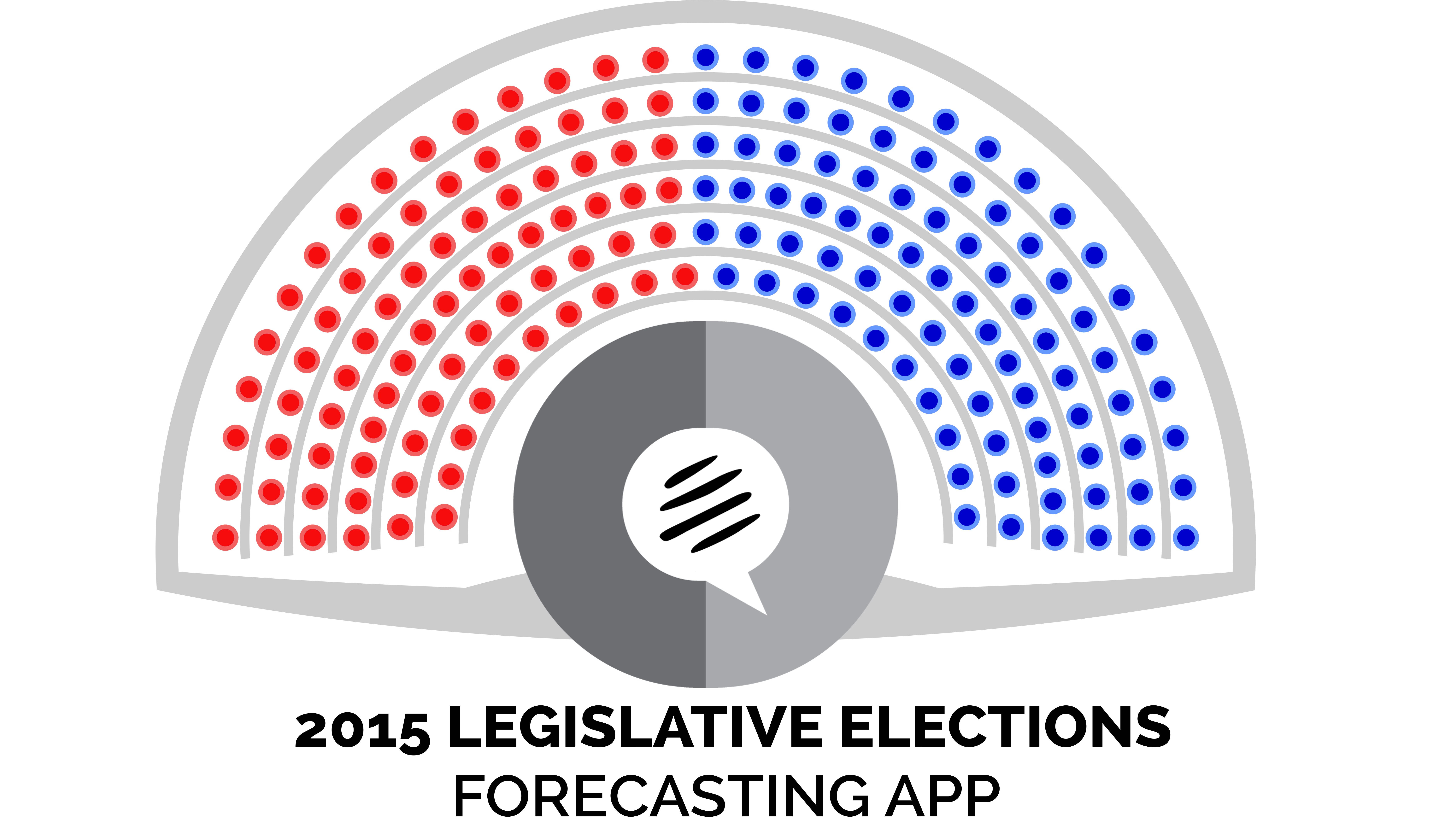Presenting the Caracas Chronicles Legislative Elections Forecasting App, now in color!
Because everyone should be allowed to fiddle around with results, not just Tibisay.


 Five years ago, I got into a knock-down drag out fight with @puzkas (a.k.a. Eugenio Martínez, then El Universal’s elections guru) over the question of what must’ve seemed like a piece of arcane technical detail to many people: whether it’s possible to forecast the outcomes of a National Assembly election on the basis of “generic ballot” question (i.e., “do you intend to vote for the MUD or the PSUV candidate in your district?”)
Five years ago, I got into a knock-down drag out fight with @puzkas (a.k.a. Eugenio Martínez, then El Universal’s elections guru) over the question of what must’ve seemed like a piece of arcane technical detail to many people: whether it’s possible to forecast the outcomes of a National Assembly election on the basis of “generic ballot” question (i.e., “do you intend to vote for the MUD or the PSUV candidate in your district?”)
Actually, calling it a knock-down drag out fight is embellishing it somewhat: mostly I berated him repeatedly in public and private for stating as a fact that no such forecast was possible, and he never actually responded. He just kept repeating as a mantra that A.N. elections were not national elections: the dynamics in each voting district (circuito) were different and therefore national trends told you exactly nothing about the overall outcome of the race.
I thought that position was non-sensical: of course district-level voting trends have some stable relationship with the national opinion climate. That relationship need not be linear, it need not be the same everywhere, and it need not be simple, but it was, in principle, calculable.
Then, @Econ_Vzla did the unexpected: he went ahead and calculated it. Using data from previous elections, he calculated how, on average, PSUV’s vote share varied in a given district as a response to changes in the national generic ballot question. It was a simple approach, simplistic even: but just because a model doesn’t have a thousand bells and whistles doesn’t mean it can’t get at an essential truth, and @Econ_Vzla’s model did just that.
@puzkas thought it beneath his dignity to respond, but still we wiped the floor with him over that fight. On the basis of its share of the nationall vote, our model predicted MUD would score 66 seats in the 2010 National Assembly. In fact, it scored 65. The model didn’t get every single seat right, but the ones it got wrong it got wrong in an unbiased way: it made as many mistakes in favor of the opposition as in favor of the government. As a tool for predicting overall seat shares, it was brilliant. Proof of concept was definitively established: you can predict A.N. seat distributions on the basis of national level opinion trends. That much we proved.
So naturally, we’re back at it this time around, though with a couple of important refinements. Our 2015 model works not on the basis of the generic ballot question but of a more general poll question. Basically, we take as our single input the number of people saying they see the country’s situation as positive, and then we do the same thing we did in 2015: investigate the historic relationship in each district between the national trend and the propensity to vote for the government locally.
This year, though, we’ve decided to go one better: coding the model into a cool app that displays results visually, district by district, to give you a much more granular look of what the national opinion trend might mean locally. Other websites just tell you who the candidates are: Caracas Chronicles is sticking its neck out and telling you what results you might expect. The app’s brought to you courtesy of a whole bunch of sleepless nights and domino’s pizza consumed by our Managing Editor @emiduarte and developer @LuisErnestoZamb. It’s beautiful what they’ve done.
Go ahead and try it out, bearing in mind that on the basis of the latest Datanalisis poll the number you should be plugging into as an input is “12”. What comes out the other end when you do that is…a political earthquake of amazing proportions. But we’ll have lots more to write about that in the days to come.
Caracas Chronicles is 100% reader-supported.
We’ve been able to hang on for 22 years in one of the craziest media landscapes in the world. We’ve seen different media outlets in Venezuela (and abroad) closing shop, something we’re looking to avoid at all costs. Your collaboration goes a long way in helping us weather the storm.
Donate




